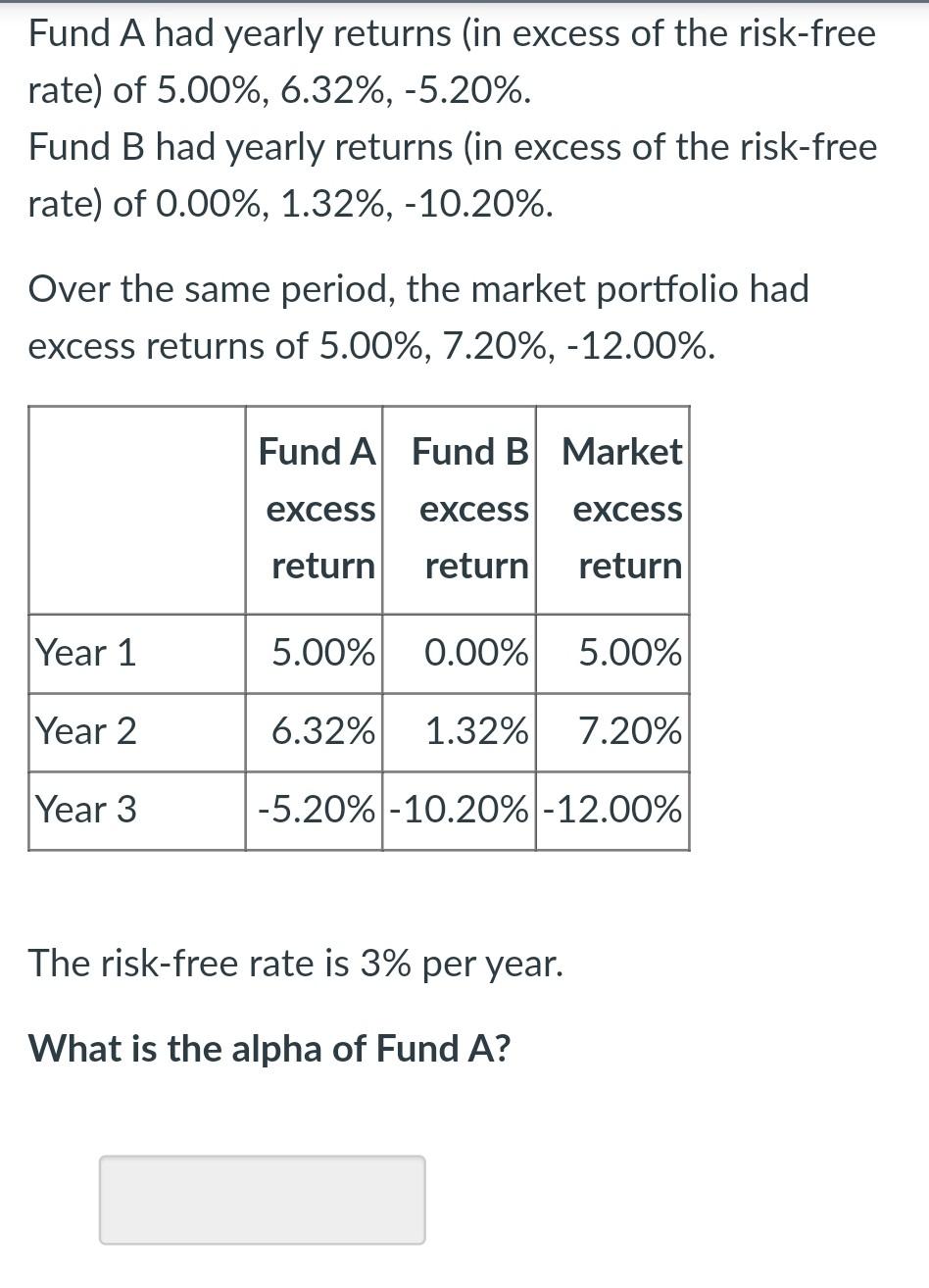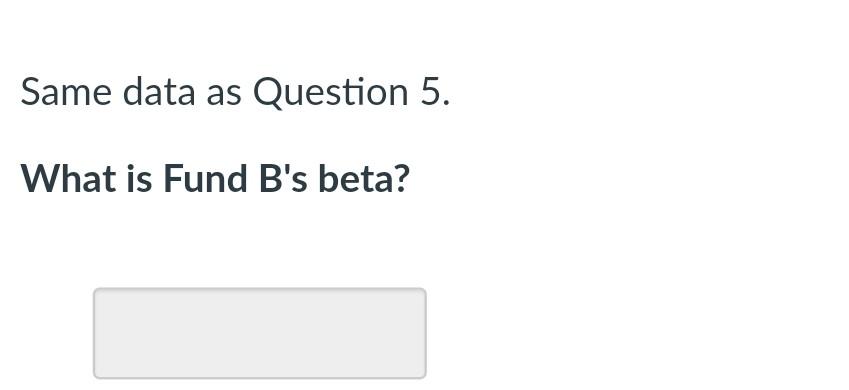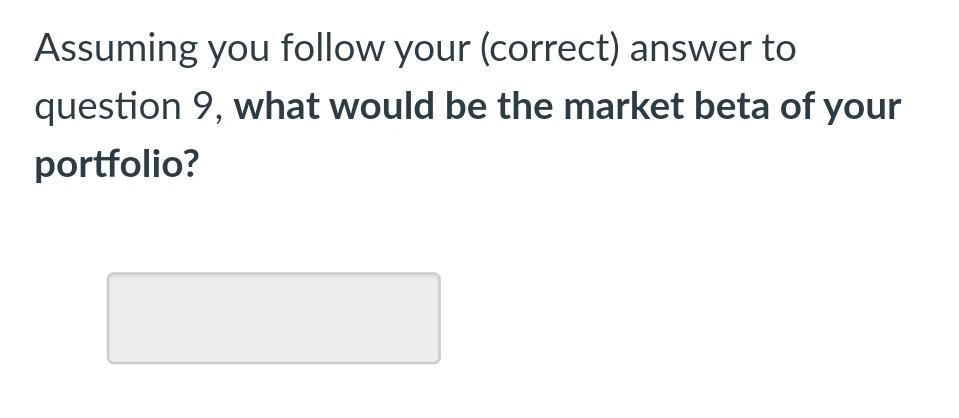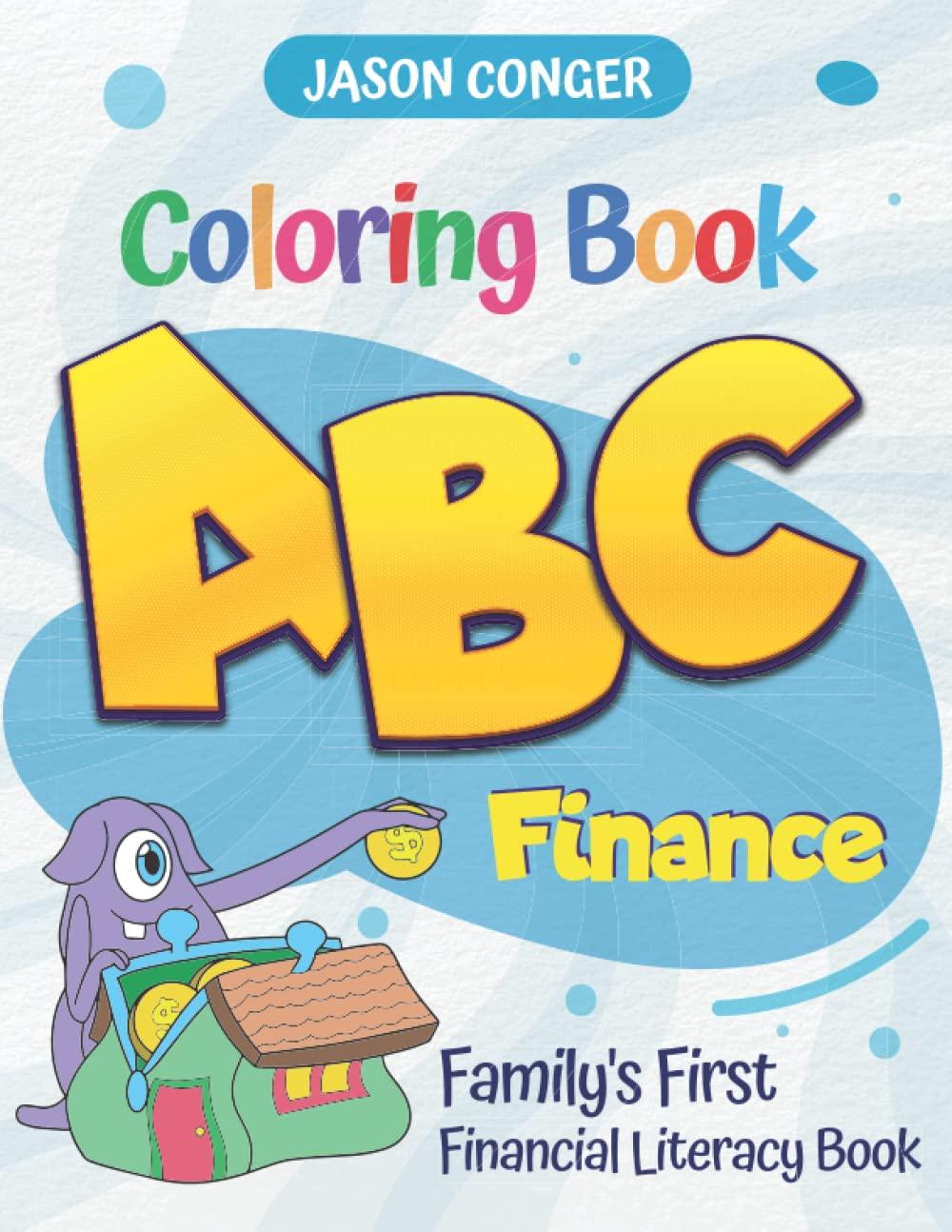Answered step by step
Verified Expert Solution
Question
1 Approved Answer
Fund A had yearly returns (in excess of the risk-free rate) of 5.00%, 6.32%, -5.20%. Fund B had yearly returns (in excess of the risk-free



Fund A had yearly returns (in excess of the risk-free rate) of 5.00%, 6.32%, -5.20%. Fund B had yearly returns (in excess of the risk-free rate) of 0.00%, 1.32%, -10.20%. Over the same period, the market portfolio had excess returns of 5.00%, 7.20%, -12.00%. Fund A Fund B Market excess excess excess return return return Year 1 5.00% 0.00% 5.00% Year 2 6.32% 1.32% 7.20% Year 3 -5.20% - 10.20% -12.00% The risk-free rate is 3% per year. What is the alpha of Fund A? Same data as Question 5. What is Fund B's beta? Assuming you follow your (correct) answer to question 9, what would be the market beta of your portfolio
Step by Step Solution
There are 3 Steps involved in it
Step: 1

Get Instant Access to Expert-Tailored Solutions
See step-by-step solutions with expert insights and AI powered tools for academic success
Step: 2

Step: 3

Ace Your Homework with AI
Get the answers you need in no time with our AI-driven, step-by-step assistance
Get Started


